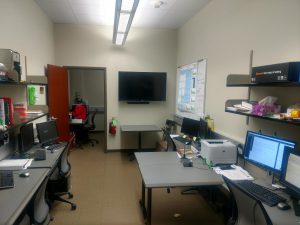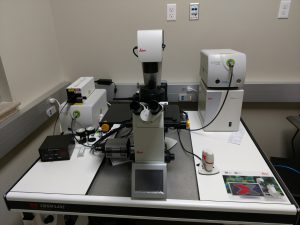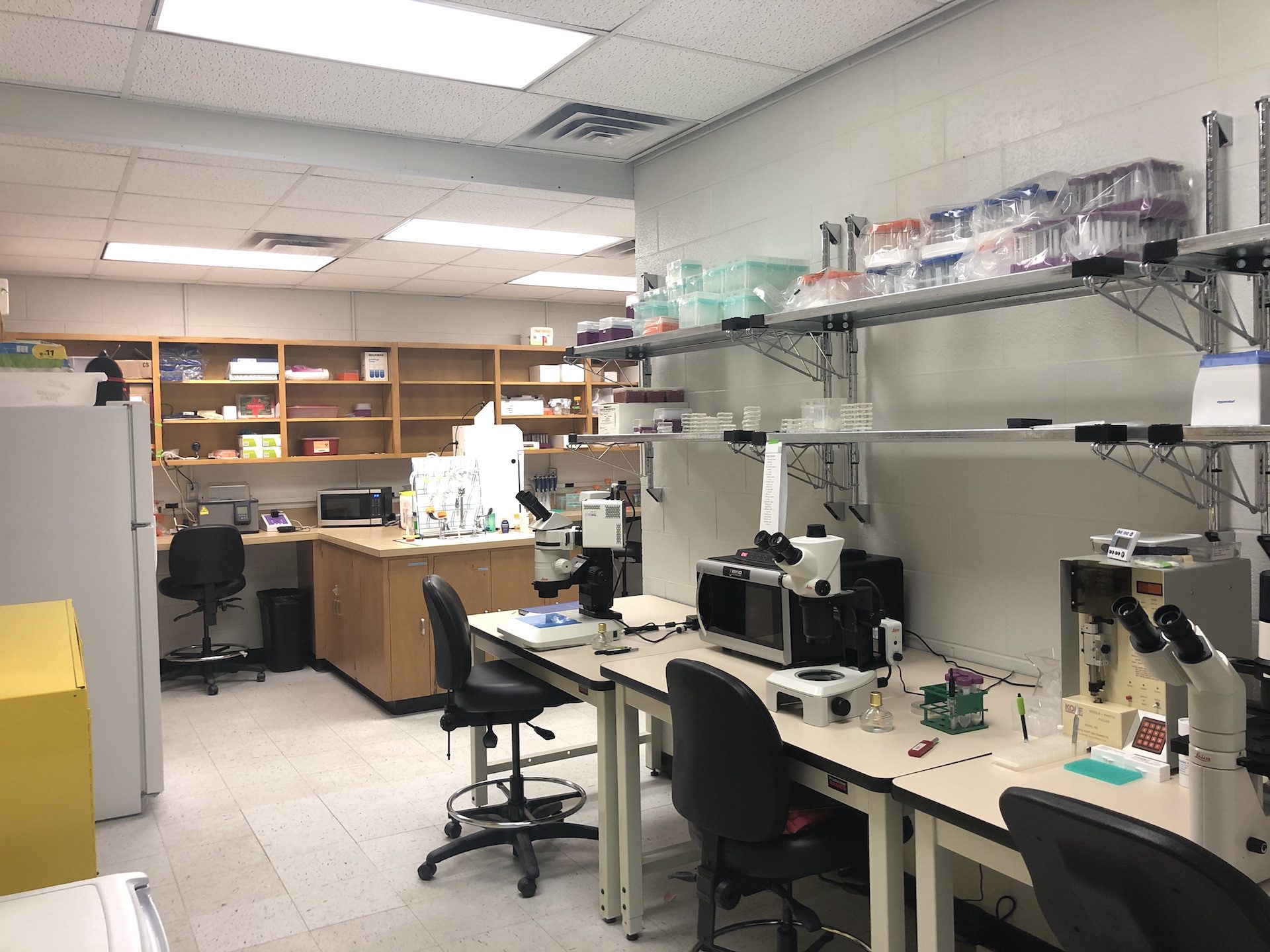Because of the extremely interdisciplinary nature of our work, the CNAS lab maintains a lab in Rayzor Hall (home to the Tandy School of Computer Science) and Oliphant Hall (home of the Department of Biology).
Rayzor Hall Lab
The Razor Hall Lab has four computer workstation along with a microscopy room in the rear of the lab. This is the main CNAS lab.
Computing area
All of the computers in the lab are modern multi-core machines (i5 and i7) running Windows 7 with dual monitors. This area of the lab also has a shared laser printer, a 50″ flat panel display, and a whiteboard.

Students working in the lab also have remote access to the the CNAS compute server. This Dell PowerEdge R820 server has four Intel Xeon E5-4617 (six cores) processors running at 2.9 GhZ. The server contains 384 GB of RAM and 9 TB of disc space in a RAID 5 configuration. Beyond providing raw compute power for large scale simulations, this system also acts as the Subversion and web server for the lab.
Microscopy area

The microscopy area contains one of the most important pieces equipment in our lab and one of the best light microscopes in the state of Oklahoma. This Leica DMI8 microscope, which we lovingly call Betty, was specifically designed to support our C. elegans research and purchased through a Defense University Research Instrumentation Proposal (DURIP) grant.
Betty is equipped with two X-Cite XLED1 light sources, a Zyla-4.2P-CL10 sCMOS camera, a MicroPoint unit for laser ablation ,and a Mosaic3 DMD for optogenetic stimulation. It is controlled by in-house designed software with LasX and MetaMorph commercial software packages available to supplement imaging capacities. This microscope also has a dedicated high power workstation and 49TB disk array for storing recorded images and videos.
OLIPHANT Hall Lab

Our wet lab facility contains equipment and reagents typically used for culturing and maintaining C. elegans. This lab is primarily used for media preparation, storage of worm strains, performing genetic crosses, and in the near future performing plasmid injections as part of new strain creation.